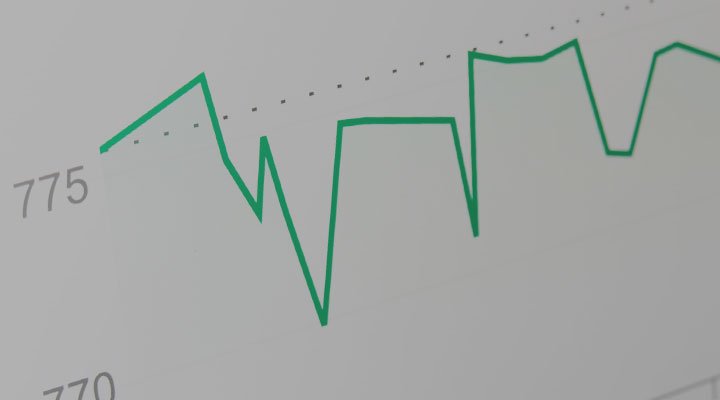ETFs vs mutual funds
Home › Investments › ETFs vs mutual funds
ETFs and mutual funds have a lot in common. For example, both consist of a mix of different assets, allowing investors to diversify their portfolios, but there are a few key differences in the way they’re managed. On this page, you’ll learn what these differences are and find out which might be a good investment for you.
Management: ETFs are passively managed and usually track a market index, while mutual funds are actively managed by a fund manager who decides which assets to buy or sell.
Fees: Mutual funds tend to have higher fees than ETFs. This is because they have an active fund manager who requires more resources than an ETF fund manager. As ETFs are passively managed, the fund manager can run the fund more efficiently.
Trading: You can actively trade throughout the day in ETFs, while you can only trade in a mutual fund at the end of trading when the prices are fixed and the market has closed.
What is an ETF?
An exchange traded fund (ETF) is a type of investment that can be traded on the stock exchange the same way regular stock can. Although ETFs can invest in any number of industries, they always track a specific index. This index can represent an industry, country or commodity. Shares in ETFs can typically be bought and sold throughout the day.
ETFs hold assets such as stocks, bonds, commodities, and even currencies, and generally operate on a type of mechanism designed to keep trading close to the asset’s net value, which allows stocks to be bought and sold easily.
What’s a mutual fund?
A mutual fund is a type of actively managed financial vehicle made up of a pool of investments, or money collected from many investors. This pool is used to make lump sum investments in stocks, bonds and other assets that show high potential returns. Unlike ETFs, mutual funds only trade once a day after the markets close. Mutual funds are operated by professional fund managers who are responsible for actively managing the fund and trying to outperform the market.
What’s the difference between an ETF and a mutual fund?
The main difference between ETFs vs mutual funds is that mutual funds are actively managed, whereas ETFs are passively managed. While they have a lot in common, like consisting of a mix of different assets, there are more differences, too. Mutual funds allow for buying or selling assets within the fund to help investors make a profit, despite shifting markets. ETFs can be bought and sold in a similar way to stocks and tend to track a specific market index.
Some of the key differences between ETFs and mutual funds are the following:
- How they’re managed
- ETFs: ETFs are passively managed funds that track a market index and make profits based on the tracked index performance.
- Mutual funds: Mutual funds are run by an active fund manager, who usually has a team of analysts who attempt to beat the market.
- Expense ratio
- ETFs: Passively managed funds are comparatively inexpensive, and some offer expense ratios as low as 0.05%.
- Mutual funds: The average annual expense ratio of actively managed funds is around 0.67%. Expense ratios can differ, based on the type of mutual fund you invest in.
- Making trades
- ETFs: ETFs are traded throughout the day, just like stocks, where the price depends on the supply and demand. However, an ETF’s share price can be tied to the net asset value (NAV) during the creation and redemption process.
- Mutual funds: Mutual funds provide their NAVs at the end of each trading day.
- Minimum investment
- ETFs: ETFs are purchased based on the share price in the exchange market.
- Mutual funds: The majority of mutual funds have a minimum investment, although this could be as low as £100 upfront or £25 a month.
Redeeming money from ETFs and mutual funds
To understand how money is redeemed, you first need to know the difference between the ‘primary market’ and ‘secondary market’. Put simply, the primary market is where securities like stock and shares are created. The secondary market is where those securities are traded by investors and is commonly known as the stock exchange.
If an investor wants to redeem their money, they usually return the shares to the fund manager who then sells the underlying assets and gives the money to the investor (the primary market). This applies regardless of whether the product is an ETF or a mutual fund. If the fund’s assets increase in value, the NAV also increases. Investors can buy and sell at NAV, potentially realising capital gains / losses every day.
ETFs are also traded on the stock exchange (secondary market), meaning they have two prices: the NAV and the stock market price. These two prices are closely linked through the redemption and creation process. If an investor wants to sell ETF shares, they’ll need to notify their broker who will decide whether to trade on the primary or secondary market (assuming this broker is also an authorised participant).
What are the tax implications on ETFs and mutual funds?
Taxes on ETFs and mutual funds are the same as any other investment. You may pay tax when selling your shares for a profit. This tax is called capital gains. You can earn up to £3,000 in profit as an individual (2025/26) before having to pay capital gains tax.
You may either pay short or long-term capital gains. Short-term gains apply to shares that you have held for less than a year before selling. Long-term gains are profits from shares sold after you’ve held the shares for more than a year. If you have to pay capital gains tax, it will depend on the income tax bracket you’re in.
Mutual funds often have higher tax implications because they pay investors capital gains distributions, although it’s important to note that some ETFs also distribute dividends.
Is an ETF or a mutual fund right for me?
Both ETFs and mutual funds can be good tools for investors. When choosing one over the other, you should consider what you value most. Deciding whether you want an actively or passively managed product is key. There are pros and cons to both types of management structures, although academic finance research indicates that passive investments tend to outperform active investments over the long run.
Before making a decision, you should always consider the level of risk you’re comfortable with, and it’s best to talk to a financial advisor before signing up to any financial product.
The information provided here is for informational and educational purposes only and does not constitute financial advice. Please consult with a licensed financial adviser or professional before making any financial decisions. Your financial situation is unique, and the information provided may not be suitable for your specific circumstances. We are not liable for any financial decisions or actions you take based on this information.
Prefer a guaranteed return on your savings?
If you feel that ETFs and mutual funds pose more risk than you’re happy to tolerate, you could put your money into savings accounts which offer competitive rates of interest, such as fixed rate bonds. As the interest rate is fixed, you’ll know exactly how much interest you’ll earn by the end of the term.
Save smarter with the Raisin UK newsletter!
What’s in it for me?
- Receive exclusive updates on market-leading rates
- Ensure you never miss a bonus offer
- Keep your finger on the pulse with the latest financial news


